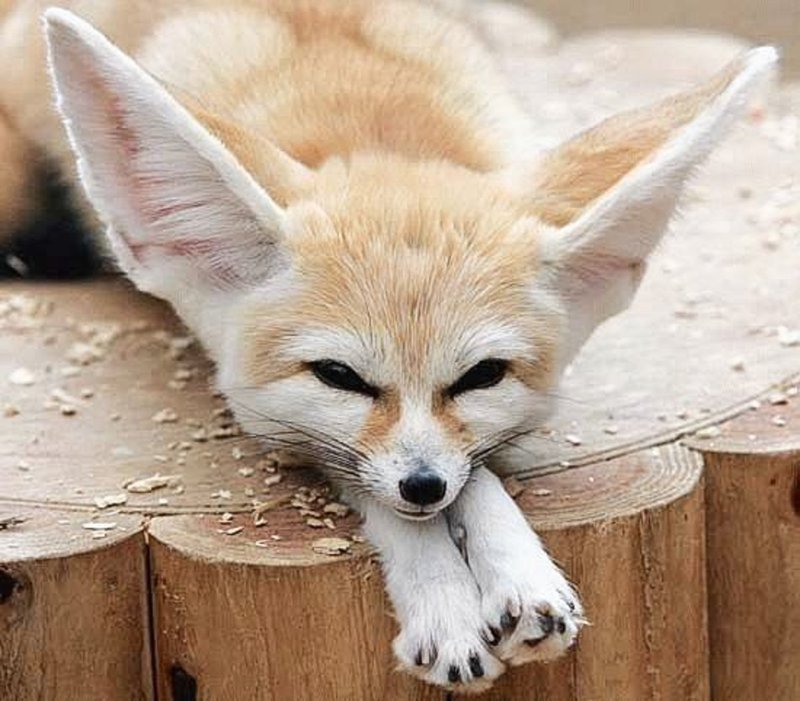
This guide is here to help you navigate that unique situation. We’ll cover everything from how to appreciate these little foxes from a distance to what actions to take to stay safe. Whether you’re exploring the sandy dunes of North Africa or just curious about wildlife encounters, understanding what to do if you see a fennec fox can be both fascinating and essential.
Recognizing a Fennec Fox
First, let’s talk about how to spot a fennec fox. They’re not your typical foxes—they have distinct features that make them stand out. Fennecs have a sandy-colored coat that helps them blend in with their desert surroundings. Their large ears can grow up to six inches in length and are not just adorable; they play a critical role in thermoregulation, allowing them to release heat. If you’re lucky enough to see one, you’ll notice their inquisitive nature as they explore their environment, often standing on their hind legs to get a better look around.
Aside from their ears and size, fennecs also have a bushy tail that aids in balance and acts almost like a blanket when they curl up at night. They tend to be nocturnal, meaning they’re active during the night. If you’re in the desert and spot one during the day, it might be resting in the shade, conserving energy.
Here’s a quick checklist for identifying a fennec fox:
- Sandy-colored coat
- Large, bat-like ears
- Small size (about the size of a domestic cat)
- Bushy tail
Keeping Your Distance
Encountering a fennec fox can be thrilling, but it’s crucial to remember that these are wild animals. Just like you wouldn’t approach a deer in the woods, it’s best to keep a respectful distance. Getting too close can stress the animal and lead to defensive behavior. Honestly, you wouldn’t want to scare it off or, worse yet, put yourself in a risky situation.
When you spot a fennec fox, find a comfortable spot to observe from afar. Use binoculars if you have them; they enhance your experience without intruding upon the fox’s territory. Since fennec foxes are naturally curious, they might come closer to investigate, but it’s important to let them approach on their own terms.
Here’s why maintaining a distance is key:
- It keeps the fox calm and safe.
- It prevents you from inadvertently stressing the animal.
- A safe distance allows for better observation and appreciation.
What Not to Do
You might be wondering what actions you should avoid when you discover a fennec fox in the wild. Here’s the thing: while they are cute and seemingly harmless, there are several actions that can lead to trouble for both you and the fox.
First off, don’t attempt to touch or feed the fox. Wild animals have different dietary needs than pets, and feeding them can disrupt their natural foraging behavior. It may also encourage them to approach humans more frequently, which can lead to dangerous situations. Additionally, never chase or corner the fox, as this can make it feel threatened and lead to aggressive behavior.
Keep in mind:
- Don’t feed or try to pet the fox.
- Avoid cornering or chasing it.
- Don’t use loud noises or sudden movements.
Staying calm and reserved not only keeps you safe but also ensures the fox can continue its life in peace.
Understanding Fennec Fox Behavior
Understanding the behavior of fennec foxes can enhance your experience when you encounter one. These foxes are social animals and will often be seen playing with each other, especially if there are pups around. They communicate using a series of barks, whines, and purring sounds. Being aware of their body language helps you interpret their mood and intentions. If a fennec fox seems agitated, with ears pinned back or a stiff stance, it’s best to give it space.
Fennecs are natural foragers, hunting insects and small rodents at night. They use their keen hearing to locate prey hidden underground. Watching them hunt is a magical sight, as they dig in the sand with their powerful front paws. This behavior not only showcases their adaptability but also serves as a reminder of their role in the ecosystem.
When observing fennec foxes, consider these behavior insights:
- Social interactions: Look for play among multiple foxes.
- Vocalization: Listen for barks or whines as part of their communication.
- Hunting patterns: Observe their foraging style, especially at dusk or dawn.
Capturing the Moment Responsibly
If you’re keen on capturing the moment, taking photos can be a great way to remember your encounter. But remember to be respectful! Use a zoom lens to stay at a distance, which allows you to snap beautiful pictures without invading the fox’s personal space. This approach not only ensures better photos but also minimizes stress for the animal.
When photographing wildlife, consider the light and time of day. Early mornings or late afternoons offer the best lighting and animal activity. Keeping your camera ready but discreet will help you capture genuine moments without startling the creature.
Here’s how to approach photography responsibly:
- Use a zoom lens to avoid getting too close.
- Be patient and wait for natural behavior.
- Avoid using flash to prevent startling the fox.
Understanding the Environment
Being aware of the environment around you when you spot a fennec fox is essential for both your safety and the well-being of the fox. The desert can be unpredictable, with extreme temperatures and shifting landscapes. Knowing basic desert survival skills can be beneficial. Carry plenty of water, wear appropriate clothing, and know the signs of dehydration or exhaustion.
Also, be respectful of the ecosystem. Fennec foxes play a vital role in controlling insect populations and aerating the soil with their digging habits. By understanding and respecting their environment, we can ensure that these captivating animals continue to thrive.
Here are some tips on desert safety:
- Stay hydrated and know the signs of heat exhaustion.
- Respect the wildlife and their habitat.
- Follow local guidelines regarding wildlife viewing.
Encountering a fennec fox in the wild can be an amazing experience! The key to enjoying the moment without putting yourself or the fox at risk is to maintain a respectful distance and understand their behavior. Remember to observe quietly, avoid any actions that might stress the animal, and appreciate the beauty of nature.
These little creatures are not just adorable; they are a vital part of their ecosystem. By keeping a safe distance and capturing the moment responsibly, you help ensure that fennec foxes can continue to thrive in their natural habitat. So the next time you find yourself in the wild and catch a glimpse of those big ears, you’ll know exactly what to do!

